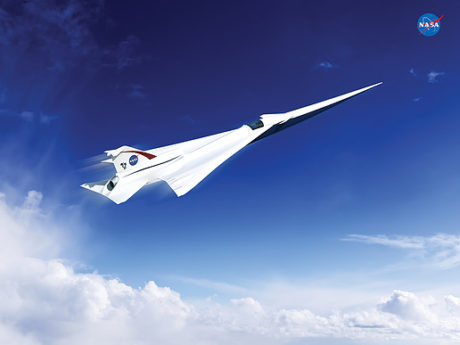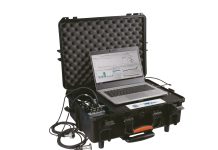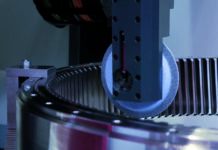Research on supersonic flight has quietly been infiltrating the desks of a variety of engineering work stations, verified by NASA‘s recent contract award for the preliminary design of a flight demonstration aircraft with a low boom profile. This is the first in a series of X-planes in NASA’s New Aviation Horizons initiative, introduced in the agency’s Fiscal Year 2017 budget.
“NASA is working hard to make flight greener, safer, and quieter—all while developing aircraft that travel faster, and building an aviation system that operates more efficiently,” NASA Administrator Charles Bolden said recently. “It’s worth noting that it’s been almost 70 years since Chuck Yeager broke the sound barrier in the Bell X-1. Now we’re continuing that supersonic X-plane legacy with this preliminary design award for a quieter supersonic jet with an aim toward passenger flight.”
To that end, NASA selected a team led by Lockheed Martin Aeronautics to complete a preliminary design for Quiet Supersonic Technology (QueSST). The work will be conducted under a task order against the Basic and Applied Aerospace Research and Technology (BAART) contract at NASA’s Langley Research Center in Virginia.
Prior to going out to industry, NASA conducted feasibility studies to better understand acceptable sound levels across the country. It then asked industry teams to submit design concepts for a piloted test aircraft that can fly at supersonic speeds, creating what it describes as a “supersonic heartbeat”—a soft thump rather than the window-shaking boom most often associated with supersonic flight.
Lockheed Martin will receive about $20 million over 17 months for QueSST preliminary design work. GE Aviation and Tri Models are also part of the team, which will develop baseline aircraft requirements and a preliminary aircraft design, with specifications, and provide supporting documentation for concept formulation and planning. This documentation will be used to prepare for the detailed design, building, and testing of the QueSST jet. Performance of the preliminary design also must undergo analytical and wind tunnel validation.
Learn more: http://articles.sae.org/14650/



